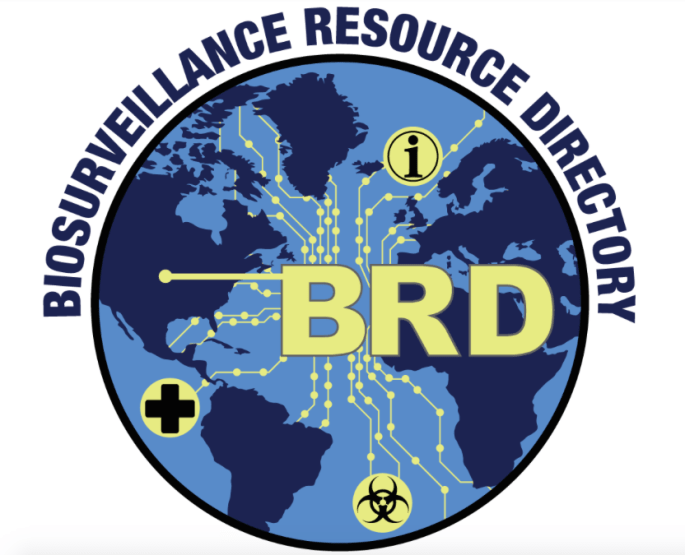TGIF and cheers to another week of biodefense news! Check out the GAO multimedia video on the risks of incomplete inactivation of pathogens. A whistleblowing former Pasteur Institute official in South Korea is reporting that a scientist for the South Korean branch took MERS-CoV samples on a commercial flight from Seoul to Paris without proper clearance and violated UN rules and French laws. The CDC is reporting a spike in the number of acute flaccid myelitis (AFM) reported. This rare polio-like illness can cause paralysis and was linked to outbreaks of enterovirus D68 in 2014. Ever wondered about opportunities to finance pandemic preparedness? Bill Nye has a new video on the “science illiteracy” of U.S. leaders, pointing to Ebola and climate change response as indicators of mistrust of science within the U.S.
Don’t Miss the Biological Threats in the 21st Century Book Launch!
 Make sure to RSVP by Sunday for the upcoming (October 14th) book launch of Biological Threats in the 21st Century! Biological Threats in the 21st Century introduces readers to the politics, people, science and historical roots of contemporary biological threats through rigorous and accessible chapters written by leading scholars and supplemented by expert point-of-view contributions and interviews. The book launch will feature a panel discussion on the threat of biological weapons and the role of scientists in bioweapons non-proliferation and disarmament. The event is free and open to the public. Lunch will be available, first come, first serve, beginning at 11:45 AM so please RSVP. Attendants will also be able to pick up the book at a 15% discount.
Make sure to RSVP by Sunday for the upcoming (October 14th) book launch of Biological Threats in the 21st Century! Biological Threats in the 21st Century introduces readers to the politics, people, science and historical roots of contemporary biological threats through rigorous and accessible chapters written by leading scholars and supplemented by expert point-of-view contributions and interviews. The book launch will feature a panel discussion on the threat of biological weapons and the role of scientists in bioweapons non-proliferation and disarmament. The event is free and open to the public. Lunch will be available, first come, first serve, beginning at 11:45 AM so please RSVP. Attendants will also be able to pick up the book at a 15% discount.
GMU Biodefense Graduate Program Open Houses 
We invite you to attend an open house to learn more about the Schar School of Policy and Government. The session will provide an overview of our master’s degree programs, an introduction to our world-class faculty and research, and highlights of the many ways we position our students for success in the classroom and beyond. Our admissions and student services staff will be on hand to answer your questions. Check out the next MS info program on Wednesday, October 19: 6:30pm-8:30pm- Arlington Campus, Founders Hall, Room 126
Drawing on world-class original research and high-level practical experience, our faculty prepare students to be creative and effective participants in policy-making and political discourse. By working closely with these faculty to conduct research that influences decisions at the local, national and international levels, our PhD graduates emerge prepared for high-powered careers in the public, private, and nonprofit sectors. The next PhD info session will be on Wednesday, October 12, 2016: 7:00pm-8:30pm – Fairfax Campus, Johnson Center, Room 334
The State of Vaccine Skepticism in Maps
Typically, we look at graphs of vaccine exemptions, but you can now explore vaccination confidence throughout the world via interactive maps. A recent study looked at public confidence in vaccines, asking 66,000 people in 67 countries their thoughts and beliefs in vaccines. Researchers found that France was the least confident in vaccine safety and that “one peculiar conflict emerges from Southeast Asia, where the public seemingly has little doubt as to the safety, importance, or effectiveness of vaccines, yet may eschew them on religious grounds.” Attitude and confidence in vaccines is strongly correlated with vaccine exemptions or refusal. As we saw with California and the Disneyland-associated measles outbreak in 2015, vaccine-preventable disease are becoming a growing issue, not just within the U.S., but on a global level. Since we’re on the topic – make sure to get your annual flu shot as the CDC is recommending people get their flu vaccines before the end of October. You can find more on the 2016/2017 flu season here.
Las Alamos is Now Tracking Global Disease Outbreaks
 Biosurveillance is a mixed bag of tricks – some prefer focusing on symptoms, others on vectors, but overall, there’s been a steady dispute regarding how best to pursue it. Los Alamos National Laboratory in New Mexico is working to break through the fog and establish a new method “describing disease that is designed to bring this disparate field together and gain international traction. Their new system of classification is called the Anthology of Biosurveillance Diseases, and they have set up an online database to support it.” The new system takes into account many important parts of the epidemiology and biosurveillance practices for disease tracking. Detailed description of vectors, search capabilities by symptoms, and a wide range of synonyms for diseases are all components to this new system. This is no easy task and the system designers know that as new diseases are found or knowledge expands for existing ones, there will be no rest for the wicked. Biosurveillance has so many moving parts and this database is the first step in trying to get them all into one area to better strengthen the surveillance system and thus the capacity for response by public health. While they work to make the updating process automated, the database has been made available online here.
Biosurveillance is a mixed bag of tricks – some prefer focusing on symptoms, others on vectors, but overall, there’s been a steady dispute regarding how best to pursue it. Los Alamos National Laboratory in New Mexico is working to break through the fog and establish a new method “describing disease that is designed to bring this disparate field together and gain international traction. Their new system of classification is called the Anthology of Biosurveillance Diseases, and they have set up an online database to support it.” The new system takes into account many important parts of the epidemiology and biosurveillance practices for disease tracking. Detailed description of vectors, search capabilities by symptoms, and a wide range of synonyms for diseases are all components to this new system. This is no easy task and the system designers know that as new diseases are found or knowledge expands for existing ones, there will be no rest for the wicked. Biosurveillance has so many moving parts and this database is the first step in trying to get them all into one area to better strengthen the surveillance system and thus the capacity for response by public health. While they work to make the updating process automated, the database has been made available online here.
ISSF Roundtable on Barriers to Bioweapons
If you haven’t read GMU Biodefense Associate Professor Sonia Ben Ouagrham-Gormley‘s Barriers to Bioweapons: The Challenges of Expertise and Weapons Development, get the scoop from this latest review. Dr. Ouagrham-Gormley’s book breaks down the realities behind bioweapons development and that weaponization of biological agents is much more difficult than many realize. Not only is this one of my favorite books, depicting the realities of tacit knowledge as a major roadblock for non-state bioweapons development, but this review gives great insight from multiple subject matter experts from several academic institutions. “The reviewers place Ben Ouagrham-Gormley’s work in the context of the literature on nuclear power and nuclear weapons, and note that she impressively draws from multiple literature, including business school case studies, anthropology, and organizations and management. To these strengths, I would like to add three others: first, Barriers to Bioweapons is well organized and very well written—a model of rich empirics and theoretical sophistication. Second, Ben-Ouagrham-Gormley successfully tackles a large and hard problem: showing how state structures and processes shape specific technical and scientific outcomes. Third, in addition to her excellent discussion of tacit knowledge, Ben Ouagrham-Gormley writes with great insight about knowledge reservoirs, knowledge transfer, and knowledge loss in and across organizations.”
Enhancing International Nuclear Nonproliferation in an Increasingly Dangerous World
GMU Biodefense PhD alum, Daniel M. Gerstein points to the vulnerability of international nuclear nonproliferation and how this U.S. national security strategy is “teetinger on a dangerous precipice.” What can the U.S. do? Between North Korea’s recent nuclear and missile tests and Russian President Vladimir Putin’s halting of the bilateral Plutonium Management and Disposition Agreement with the U.S., the stakes are progressively getting higher. Gerstein notes that new national programs tend to focus on deterrence against regional adversaries and terrorist interest in acquisition of nuclear capabilities hasn’t waned, but rather the interest has grown as proliferation challenges become chronic. He notes several key steps to help reverse these trends – “First and foremost, the United States should reassure allies about the viability of U.S. nuclear security guarantees and the stockpile. The next administration will need to conduct a Nuclear Posture Review to set the country’s nuclear policy for a five- to 10-year period. Second, the United States should emphasize its absolute support for the goals of the Nuclear Non-Proliferation Treaty, or NPT – nonproliferation, disarmament and peaceful uses of nuclear energy. Third, the two most immediate state nuclear proliferation issues must be addressed: Iran and North Korea. On Iran, the United States should build support for the JCPOA, both domestically and across the globe.” International strategies must account for the unpredictable nature and capabilities of North Korea and push for China to increasingly pressure them to abandon their nuclear program.
All Things Zika
After reporting an additional 2,391 cases of locally acquired Zika virus in the first week of September, Puerto Rico is continuing to battle the disease as their case counts top 20,000. Texas is currently enhancing Zika surveillance in the Rio Grande Valley. Brazilian researchers are reporting a constellation of brain injuries from their work with 11 babies whose congenital Zika infections were detected before birth. “Though brain damage varied among the babies, the most common findings were brain atrophy and changes related to disturbances in neuronal migration. Defects ranged from mild brain atrophy and calcifications to severe malformations including absence of the thalamus and lissencephaly. Other findings included hypoplasia of the cerebellum, cerebellar vermis, and corpus callous.” As the outbreak rages on, U.S. public health officials are bracing for the first wave/generation of babies born with Zika-related birth defects. This Generation Zika is expected to be an extraordinary demand on special-needs care. “Data on newborns in Colombia suggests that Zika-infected women who are asymptomatic may give birth to children with Zika-related abnormalities. With that in mind, the U.S. Centers for Disease Control and Prevention has recommended testing for Zika during routine obstetric care for pregnant women who may have been exposed to the virus.” As of October 5th, the CDC has reported 3,818 cases of Zika in the U.S. Hurricane Matthew will be hitting Florida soon and as the state braces for impact, there are growing concerns about the increase of mosquito populations following flooding.
Stories You May Have Missed:
- Legionnaires’ Outbreak Grows – The Minnesota Department of Health is reporting another spike in Legionnaires’ cases in the midst of an ongoing outbreak. They recently reported 23 new cases, all of which are people who live, work, or spend time in the Minneapolis suburb, Hopkins. “Seven locations with cooling towers have been identified as possible sources. Samples have been collected from those towers. But officials point out that cooling towers are not regulated in Minnesota, so there is no registry or master list of towers.”
- The Biology of Anthrax Conference- Make sure to check out the upcoming November 15-18 conference in Tampa, Florida. While primarily a sporadic pathogen of herbivores, its use as a bio-terror agent has highlighted its ability to infect humans. This conference aims to bring together investigators active in this area with a view to sharing observations and ideas and fostering new collaborations and synergies. Participants at previous conferences in Cardiff in 2009 and 2014 included representatives from academia, industry, policy makers and government.


